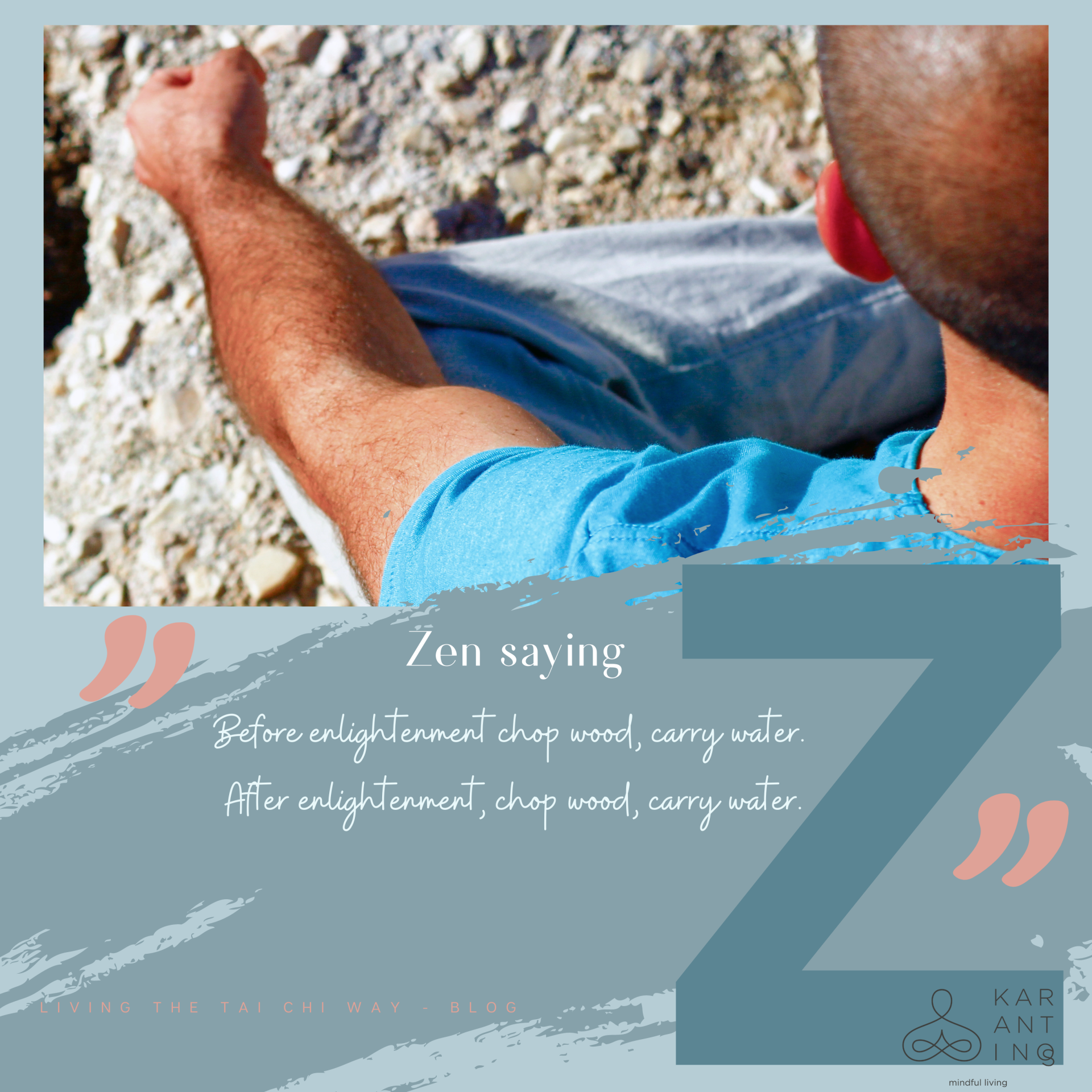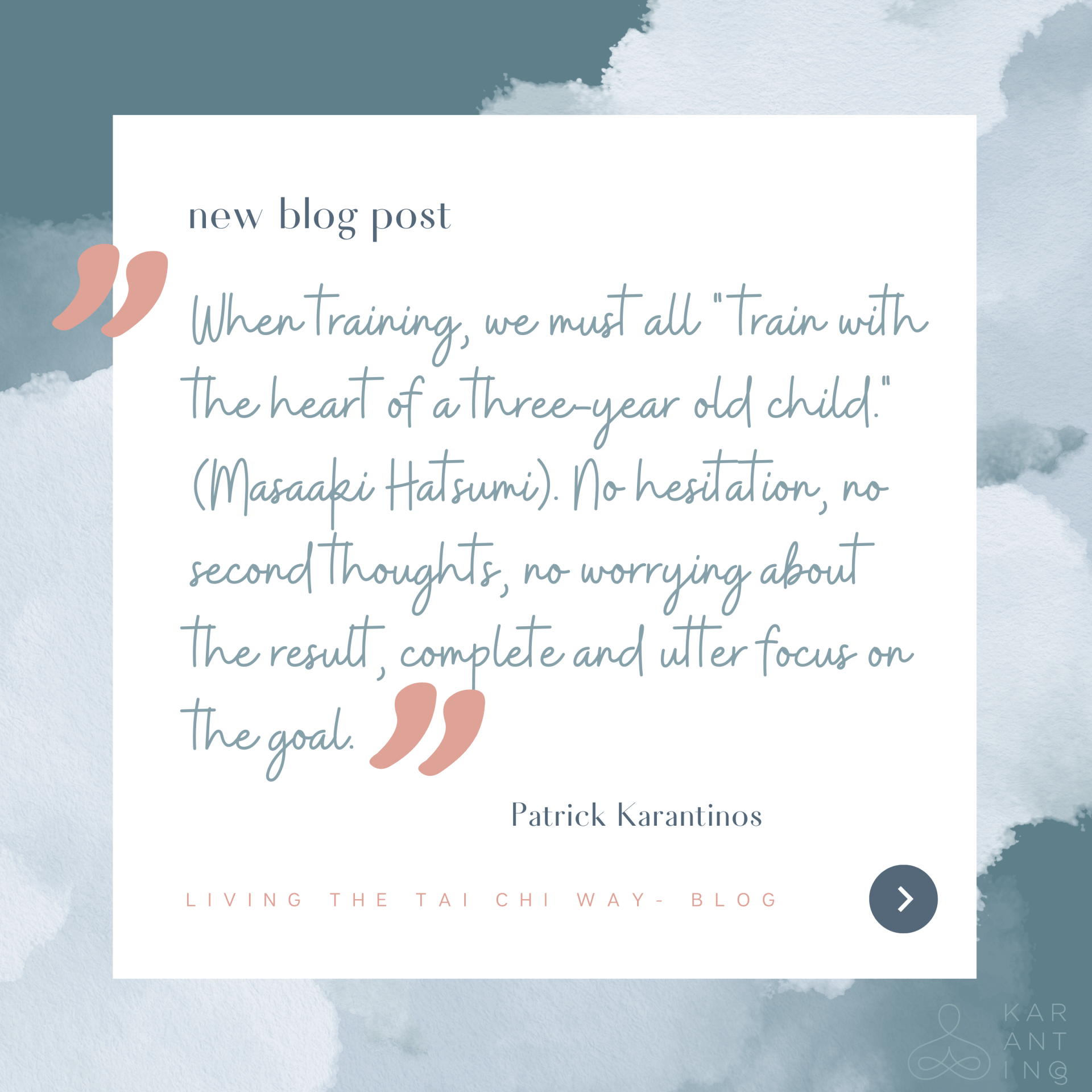Tai Chi Alphabet - The letter Y: Yin/Yang
Yin/Yang – opposing or complementary forces?

The two opposite forces, depicted in black and white, that are evident in so many aspects of the world as we experience it, came to be known as Yin and Yang. Yin in its primary meaning is “the cloudy, the overcast”, whereas Yang means “banners waving in the sun” or something shone upon and bright. These expressions, as Richard Wilhelm in his 1967 translation of the 'I Ching' (The Book of Changes') states, denote the two opposite and alternating primal states of being. Opposite yes, but are they opposing though?
As modern media would have us believe, it is very important we take a stand as either for or against anything that is happening. Polarization is the trend, and it can be seen and felt everywhere, leading to extreme behaviours and views that definitely do not help society or individuals move forward. Rather than engaging in dialogue with people holding different views in the hope that it will broaden our horizons and create new models of thought (sounds crazy I know!) people are pushed in this either-or type of thinking and battling it out on the fields of social media comments. This really helps keeping people divided and entrenched in their own views which are then reinforced by the algorithms that provide us with our news.

Coming back to this old Chinese worldview of Yin and Yang, just by examining the symbol, we see that there is a bit of black in the white and a bit of white in the black part of it. For balance or harmony to exist, Yin must be a bit Yang and Yang must be a bit Ying. This is clearly evident in Taiji practice, where one must remain relaxed while at the same time keeping a level of tension to maintain their posture and alignment in place. This is called P’eng Jin and it is likened to the power of a bamboo sprout. The body is trained to be elastic and soft without yet firm and strong within. Another example is that in order to emit force, to Fa Jin as it is called in Chinese, one must remain relaxed so that the body remains connected. There is also the basic concept of opening and closing
“In the martial arts, Opening (Kai) means to stretch and reach; Closing (He) means to draw in, preserve, transform, bend and gather. Opening-Closing is a physical expression of Yin-Yang qualities: hardness versus softness, gathering versus exploding. As complementary opposites, one cannot ‘open’ without first being ‘closed’ and vice-versa, hence this technique epitomizes the dual nature of Taiji – the opposite yet complementary. […] The Opening-Closing technique starts from the closed state. In practice, this means that one needs to be closed first before one can open. The quality of the effort you put in to closing determines your ability to open with power and effect. Without closing well, you will find your opening powerless, crude and slow. Closing not only means to bend and withdraw your upper body, but also to coordinate the heart (Xin), your intention (Yi), muscle energy (Qi), external shape (Xing) and spirit (Shen), so that all parts of the body work together.”
(Xi’an Wang, 2009, chapter 2.7)
This concept is also useful for non Taiji enthusiasts as it is common knowledge, even if it is not always applied, that any kind of relationship, where boundaries are important and a sense of individuality is healthy, but at the same time we must also be able to let go of our ego, accept and merge with the other person. Rather than remaining fixed in one position, the interplay and change between the two is what creates harmony.
I wonder how that would work in politics? Thucydides (5th century BC) states that people who have reached a position of power and yet do not exert it to the degree they could, are worthy of praise.
Another great example of the complementary nature of the opposites yin and yang is depicted in section 11 of the Dao De Jing, a Chinese text written around 400 BC, which is of unknown authorship.
“Thirty spokes surround the hub:
In their nothingness consists the carriage’s effectiveness.
One hollows the clay and shapes it into pots:
In its nothingness consists the pot’s effectiveness.
One cuts down doors and windows to make the chamber:
In their nothingness consists the chamber’s effectiveness.
Therefore: what exists serves for possession.
What does not exist serves for effectiveness.”
Laozi
(Wilhelm 1978)
So, what can we take from this? We are living in times of conflict, where everyone is trying to prove their point and discredit those who have an opposing view and at times sadly resorting to violence, usually at the expense of the innocent. When at that stage, when violence and war have reached your doorstep, of course you need to pick a side and fight or flee. Gone is the time for words and nice theories that I am so lucky to be able to conjure from the safety of my home. The rest of us that can talk and listen and reflect, those who create and benefit from the strife, those who sit comfortably at their offices and decide to send others to war, and more importantly, those who give the power to the decision and policy makers, it is up to us to learn from history and not repeat the same thoughts and behaviors. Einstein said that doing the same thing over and over again and expecting a different result is madness. Maybe it is time we realised that no matter where we think we stand in relation to our political, social, ethical, or economical views, we are all on the same boat and it is time we focus on synthesis, on creating a harmony between these opposing views, rather than trying so hard to convince everybody on the other side of the fence that we are right, and they are wrong.
Have a good day!
Patrick
References
Hanson, V. D., & Philippatos, A. (2007). Peloponnēsiakos PolemosN. Ekdot. Organismos Livanē.
Wilhelm, R., (1967) Wilhelm, R., & Baynes, C., F. (1972). The I Ching; or Book of Changes. the Richard Wilhelm Translation. Princeton University Press.
Wilhelm, R., (1978). Wilhelm, R., & Ostwald, H.G. (1985). Sect. 11. In Tao Te Ching: The Book of Meaning and Life. the Richard Wilhelm Edition. Penguin.
Wang, Xi’an (2009). Chen Family Taijiquan Tuishou. (Translation: Zhang Yanping). INBI Matrix.





